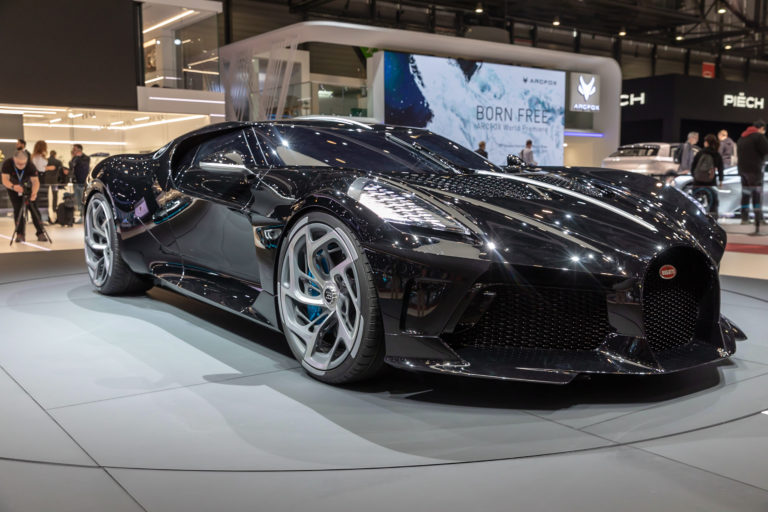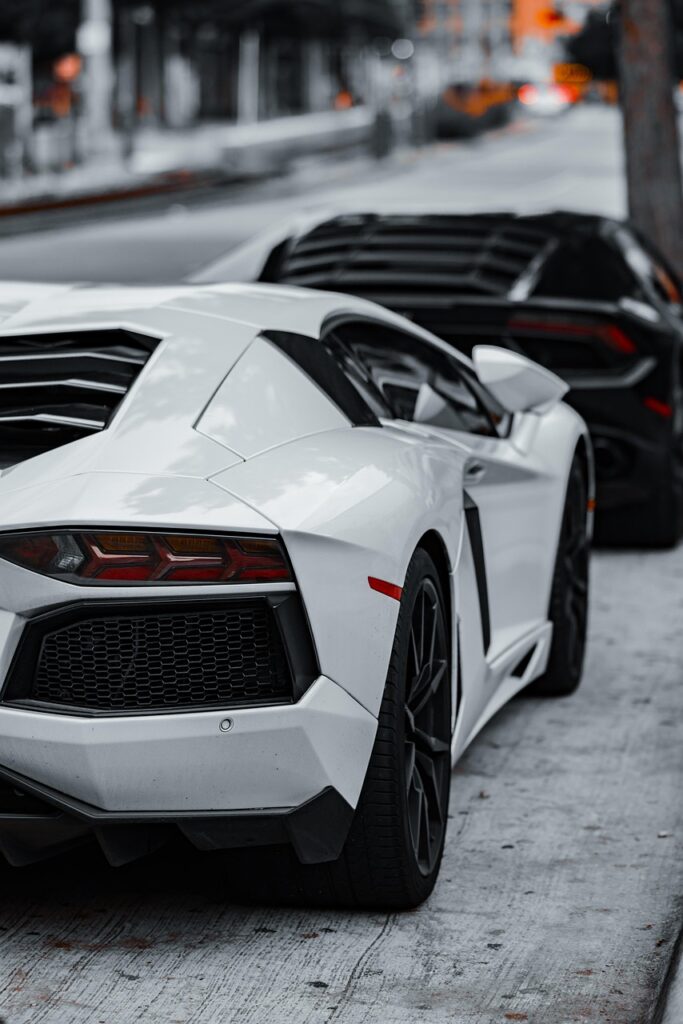
The allure of customizing one’s vehicle is undeniable. The aftermarket industry offers a seemingly endless array of modifications, from boosting horsepower to refining aesthetics, all designed to transform an ordinary car. This desire for a personalized ride, however, often masks a crucial truth: not all modifications are created equal, and some can do far more harm than good.
While certain upgrades genuinely enhance performance or add desirable features, the market is also flooded with countless modifications that are, frankly, a complete waste of time and money. Car manufacturers invest untold hours of engineering expertise and immense development dollars to perfect every vehicle aspect. Introducing poorly conceived or executed aftermarket parts can disrupt this delicate balance, leading to unforeseen issues with safety, durability, and day-to-day usability. What seems like a minor tweak can quickly turn into a costly headache.
In this in-depth analysis, drawing on extensive automotive knowledge, we highlight specific aftermarket modifications that savvy car buyers and owners should unequivocally avoid. Our aim is to provide actionable advice and detailed analyses to help you make informed decisions, ensuring your vehicle remains reliable, safe, and retains its value. We’ll explore five distinct categories of modifications that consistently prove detrimental, examining why they fall short and what risks they pose to both your wallet and your driving experience.
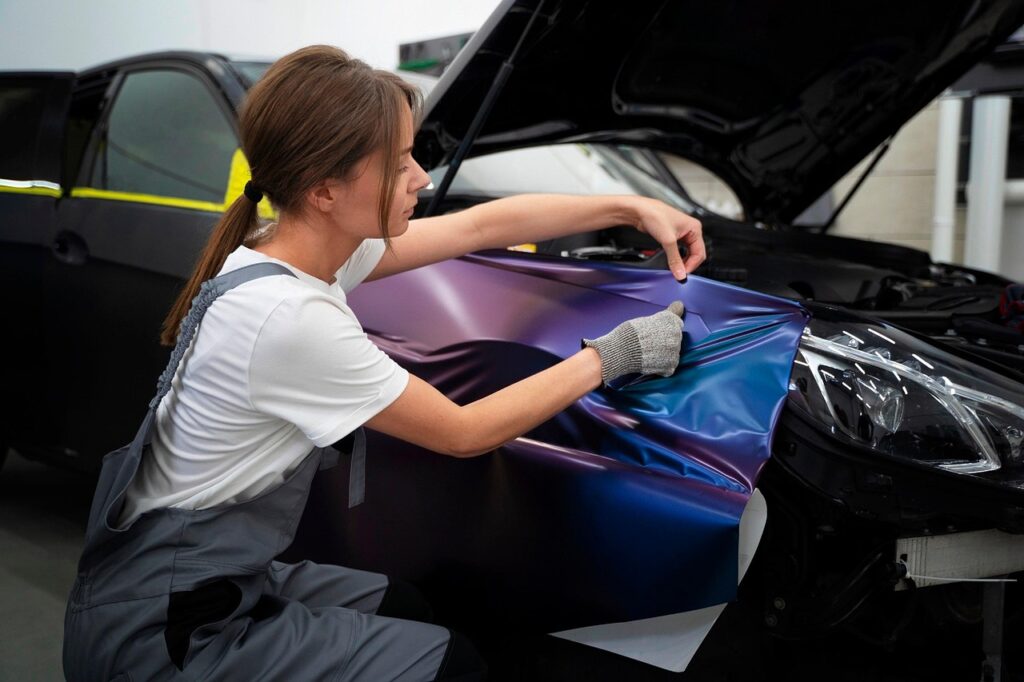
1. **Stick-on Car Components**One of the most common and visually egregious examples of wasted money involves stick-on car components. These range from fake vents and scoops to knock-off performance badging and faux carbon fiber trim, all promising an instant aesthetic upgrade. However, these adhesive-based “doodads” are often far less glamorous, being non-functional embellishments that mimic high-performance features without offering genuine benefit.
Consider ubiquitous stick-on hoodscoops, readily available for around $15. Automakers like Subaru and Corvette fit functional scoops for legitimate air intake. Their aftermarket counterparts, however, serve no purpose beyond superficial aesthetics. Stuck onto your car with adhesive, they are destined to either rip off at highway speeds or be removed, leaving unsightly, sticky residue. It’s a fleeting illusion of sportiness that quickly deteriorates.
Another significant money waster is knock-off automaker badging. For a mere $12, you can acquire a fake BMW M or Mercedes AMG badge online, hoping to elevate your standard 325i. This delivers zero performance benefit and fools precisely no one—except, perhaps, the owner. The stark cost contrast between a $12 badge and a genuine M3, due to “a high level of engineering development,” clearly indicates its worthlessness. These badges misrepresent your vehicle and signal a lack of genuine automotive understanding.
The trend extends to pretend carbon fiber trim, another adhesive-based upgrade offering no real value. For about six bucks, you can buy plastic pieces resembling carbon fiber to stick around your dashboard vents. Real carbon fiber is a lightweight, high-strength material used in performance applications; these imitations are decorative plastic. They add no structural integrity, reduce no weight, and contribute nothing to performance or luxury. This upgrade brings zero benefit and only cheapens the interior appearance, a clear example of throwing money away.
Ultimately, these stick-on components are a textbook case of form without function, failing to deliver on their implicit promise. They are often poorly made, prone to detachment, and invariably diminish a car’s authenticity and long-term appeal. Rather than investing in such superficial modifications, which offer neither practical utility nor genuine prestige, a smarter choice would be to save your money for meaningful upgrades or, as one might suggest, “Go buy a latte instead.” This underscores the sheer pointlessness of these cosmetic fakes in genuine automotive enhancement.
Read more about: Navigating the Automotive Minefield: Essential Car Accessories That Actually Save Lives (and the Gimmicks to Avoid)
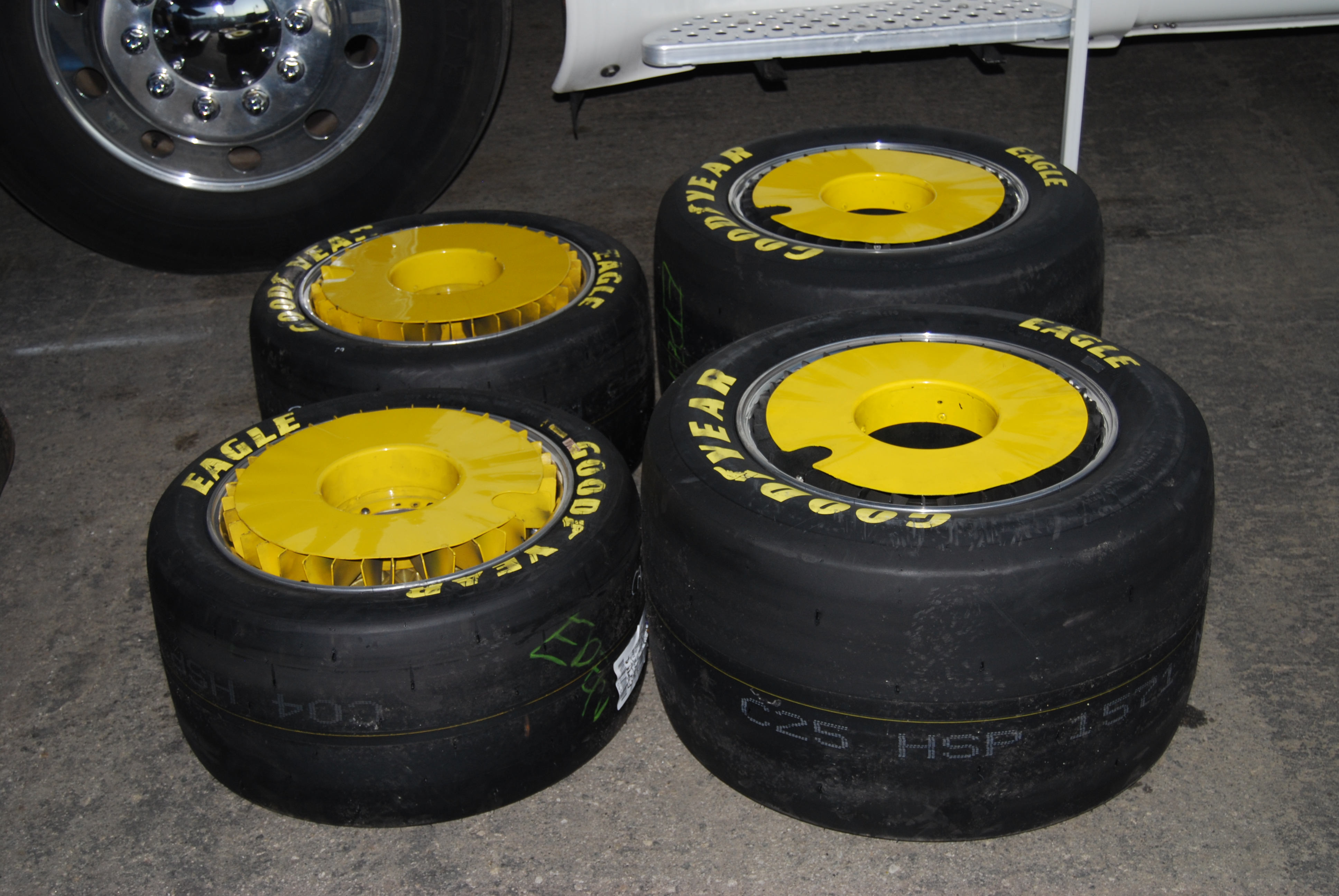
2. **Wrong-Sized Wheels and Tires**The appeal of altering a car’s wheel and tire setup is understandable, aiming for a more aggressive stance or enhanced performance aesthetics. Seeing “low-profile tires wrapping big 20-inch wheels on, say, a high-end Porsche 911” adds “visual punch,” where these components are meticulously engineered for high performance and perfect fit. However, applying such modifications without proper engineering consideration introduces problems, especially for vehicles not designed to accommodate them.
Considering 20-inch rims for a standard Honda Civic enters a realm of significant compromise. Such an alteration almost guarantees you run “the risk of rubbing the wheel wells,” leading to structural damage and accelerated wear. Beyond fitment, associated low-profile tires will “likely add ride harshness,” transforming comfortable commutes into jarring experiences. This sacrifices manufacturer-optimized ride quality, degrading the fundamental driving experience.
Furthermore, low-profile tires are inherently “more prone to damage” due to reduced sidewall height. Potholes and curbs can easily cause punctures or blowouts, leading to costly, frequent replacements. A particularly dangerous scenario involves “stretching too-small tires over those wheels,” dramatically increasing “the odds of epic failures,” a critical safety concern. The financial outlay for such an ill-advised upgrade is substantial, with “a set of four name-brand 20-inch wheels running at least $800 and even low-cost tires adding another $400.”
On the opposite end, knobby all-terrain tires fitted to standard vehicles are equally ill-suited for daily driving. These tires have “heavy-duty rubber and aggressive tread patterns” to “provide better grip in unpaved settings like the trail,” ideal for serious off-road use. Yet, when mounted on a “Black Widow F-150… used for taking kids to school and highway road trips,” their specialized design becomes a significant disadvantage.
For urban or highway driving, all-terrain tires “serve no purpose other than to wear out faster than their regular all-season counterparts.” Their aggressive treads create more road noise, reduce fuel efficiency, and offer inferior grip on paved surfaces. Increased rolling resistance stresses drivetrain components and yields a less comfortable, less precise driving experience. Ultimately, your car’s manufacturer selected a “specific wheel and tire setup” for a reason, optimizing it for safety, performance, durability, and ride quality. Deviating from this carefully engineered design is a clear path to wasting money and compromising vehicle integrity.
Car Model Information: 2020 Porsche 911 Carrera
Name: Porsche 911
Caption: The 1 millionth 911 produced on display at Volkswagen Group Forum, Berlin
Designer: Ferdinand Alexander Porsche
Manufacturer: Porsche
Production: September 1964 – present
Assembly: Stuttgart,Baden-Württemberg
Class: Sports car
BodyStyle: unbulleted list
Related: unbulleted list
Layout: Rear-engine design,rear-wheel drive
Predecessor: Porsche 356
Categories: 1970s cars, 1980s cars, 1990s cars, 2+2 coupés, 2000s cars
Summary: The Porsche 911 model series (pronounced Nine Eleven or in German: Neunelf) is a family of German two-door, high performance rear-engine sports cars, introduced in September 1964 by Porsche AG of Stuttgart, Germany, and now in its eighth generation. All 911s have a rear-mounted flat-six engine, and usually 2+2 seating, except for special 2-seater variants. Originally, 911s had air-cooled engines, and torsion bar suspension, but the 911 has been continuously enhanced, and evolved across generations. Though the 911 core concept has remained largely unchanged, water-cooled engines were introduced with the 996 series in 1998, and front and rear suspension have been replaced by Porsche-specific MacPherson suspension up front, and independent multi-link rear suspension.
The 911 has been raced extensively by private and factory teams, in a variety of classes. It is among the most successful competition cars. In the mid-1970s, the naturally aspirated 911 Carrera RSR won world championship races including Targa Florio and the 24 Hours of Daytona. The 911-derived 935 turbo also won the 24 Hours of Le Mans in 1979. Porsche won the World Championship for Makes in 1976, 1977, 1978, and 1979 with 911-derived models.
In a 1999 poll to determine the Car of the Century, the 911 ranked fifth — one of two in the top five that had remained continuously in production (the original Beetle remained in production until 2003). The one millionth example was manufactured in May 2017 and is in the company’s permanent collection.
Get more information about: Porsche 911
Buying a high-performing used car >>>
Brand: Porsche Model: 911
Price: $119,980 Mileage: 8,387 mi.
Read more about: What a Rip-Off: 15 Expensive Car Upgrades That Aren’t Worth It, According to Experts
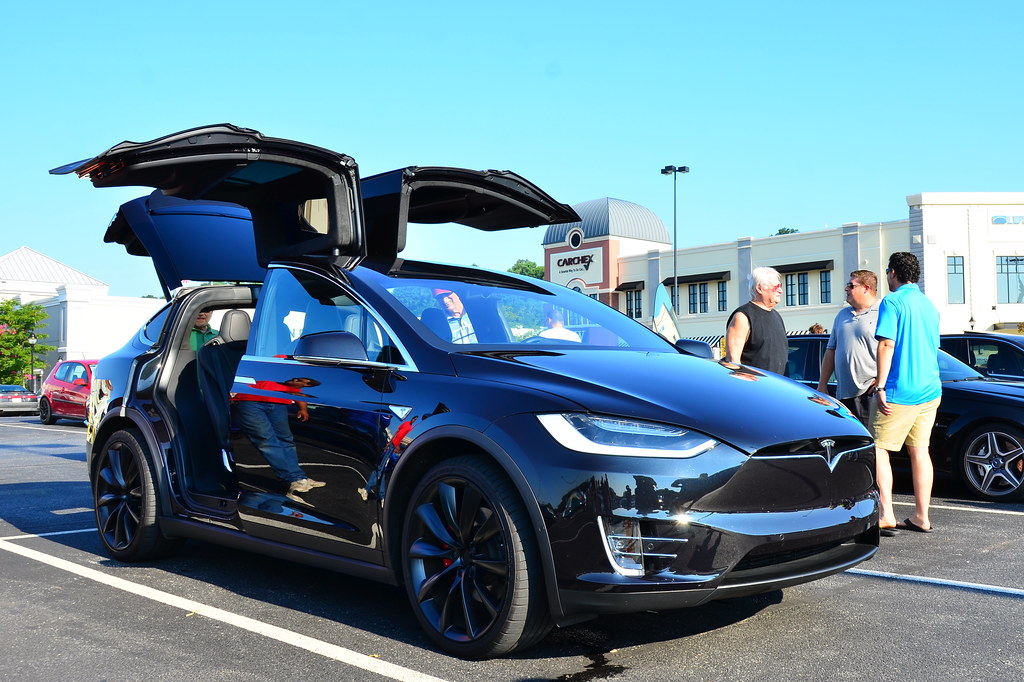
3. **Cheap Aftermarket Body Kits**The appeal of aftermarket body kits lies in their promise of transforming a vehicle’s appearance, often aiming for a sportier, more aggressive, or visually unique aesthetic. However, cheaply made body kits quickly reveal functional and financial drawbacks. Fitting such a kit, especially one of questionable quality, is a “surefire way to destroy the value of your classic car” and “likely to have a negative impact on resale value” for any vehicle. These modifications are polarizing; what one owner finds appealing, many potential buyers will see as a liability, making resale difficult.
Beyond subjective aesthetics, the practical downsides are immediate. A “cheaply made body kit is likely to crack or otherwise fail the first time you clip a speed bump with that extra-low front fascia.” This fragility compromises visual effect and indicates a lack of durability, leading to ongoing repair costs. The initial investment, potentially “thousands of dollars,” quickly becomes a sunk cost as the kit deteriorates, offering a poor return on investment and adding little to the car’s longevity.
The distinction between factory-fitted aerodynamic enhancements and aftermarket body kits is crucial. The “Porsche 911 GT3 RS, for example, is laden with aerodynamic additions carefully designed to improve airflow and efficiency when on the track at high speed.” These are the result of “untold hours of wind tunnel testing at the hands of expert engineers,” serving a clear performance function. In contrast, “slapping a replica ‘The Fast and the Furious’ body kit on your Toyota Corolla is not exactly the same thing.” Such kits are purely cosmetic, often poorly designed, and can even negatively impact aerodynamics, creating unwanted drag or lift, compromising stability and fuel efficiency. Ultimately, these kits often lead to diminished value and unforeseen problems rather than genuine enhancement.
Read more about: Fake It Till You Make It: 14 Epic Kit Cars That Deliver Supercar Thrills on a Budget
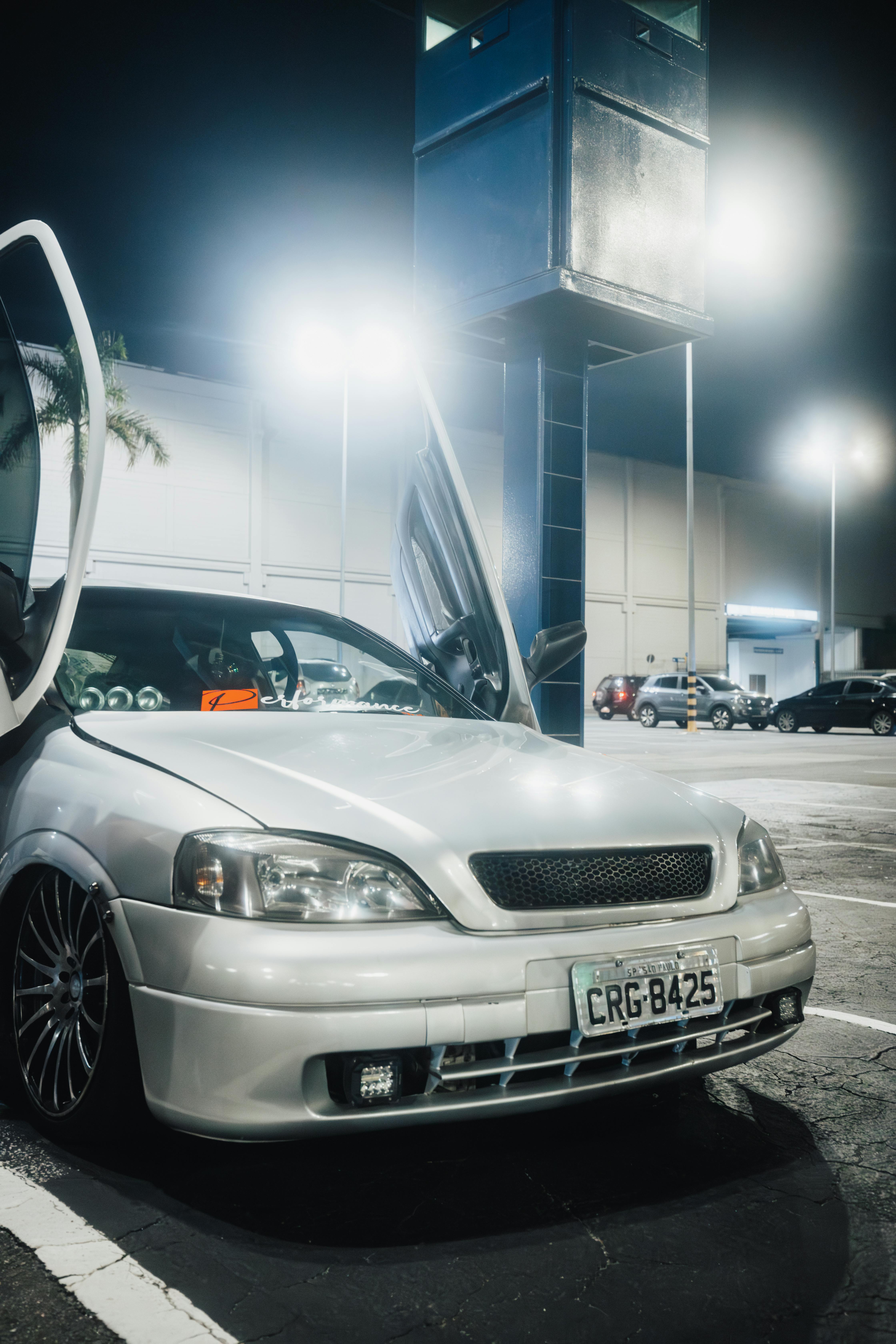
4. **Aftermarket Scissor Doors**Aftermarket scissor doors represent an upgrade prioritizing spectacle over practicality, safety, and vehicle integrity. Popularized by iconic brands like Lamborghini, these “swing-up doors” have an undeniable allure. However, the critical distinction lies between factory-fitted versions, carefully developed and integrated, and aftermarket adaptations, which invariably introduce a host of problems.
The primary issue with aftermarket scissor doors is their profound impact on daily usability. Unlike OEM versions, aftermarket kits often result in doors that are “heavy and hard to open.” This transforms basic entry and exit into a cumbersome chore. The driver must “manually lift the heavy doors into their upright position” every time, a process that quickly loses its novelty and becomes a significant hassle, especially in everyday scenarios.
Beyond physical exertion, these doors pose considerable practical challenges. They “pose significant problems in low-clearance areas,” like parking garages, where the upward swing demands substantial vertical space. This limits parking options, creating constant anxieties about accidental damage. The impracticality in urban settings far outweighs any perceived coolness, making them a source of daily frustration. These “wacky car upgrades also guarantee… the potential for unfortunate parking garage fails.”
More critically, aftermarket scissor doors introduce serious safety concerns. The context warns that “if the car rolls over, the driver or any passengers can’t completely open the doors and might not be able to get out.” This is a terrifying prospect. OEM designs factor in crash performance and emergency egress, but aftermarket kits often lack this rigorous engineering, compromising occupant safety.
Financially, “dropping over a thousand dollars to put scissor doors on your Chrysler 300C” is a poor investment. It adds a significant upfront cost, and these modifications negatively affect resale value. Most buyers view such drastic, impractical changes as a liability, reducing the pool of interested parties and diminishing market worth. Aftermarket scissor doors exemplify pursuing a fleeting trend at the expense of functional integrity, safety, and long-term financial wisdom.
Read more about: Fake It Till You Make It: 14 Epic Kit Cars That Deliver Supercar Thrills on a Budget
5. **Aftermarket Spoilers**The allure of an aftermarket spoiler often stems from its association with high-performance vehicles, promising enhanced downforce and a sportier look. Indeed, “OEM spoilers can increase downforce in track settings for high-performance cars or improve airflow in the name of efficiency for more pedestrian applications,” a testament to their functional design. However, the transition from carefully engineered factory components to generic aftermarket options reveals a stark difference, often leading to purely negative outcomes.
For most daily drivers, an aftermarket spoiler will “likely only make your old car look silly, cause visibility problems, and offer post-installation woes like water leaking into the trunk.” The aesthetic impact is often subjective and, for many, leans towards the gaudy, particularly with “absurdly large rear spoilers” that ruin a car’s appearance and add unnecessary weight. Unlike factory-installed versions which are seamlessly integrated with “industrial-grade materials,” cheaper aftermarket options degrade vehicle integrity.
Installation is another critical area where aftermarket spoilers fall short. Many require “drilling into your car’s body,” creating permanent holes that compromise structural integrity and invite rust and water intrusion. “Post-installation woes like water leaking into the trunk” are direct consequences of poorly sealed attachment points, leading to dampness and damage. This invasive process contrasts sharply with OEM spoilers, which are part of a car’s original design, ensuring proper fit and seal.
Moreover, aftermarket spoilers are frequently marketed with “nonsense” claims of performance benefits that simply do not hold up. Be wary of those claiming “reduced fuel consumption at high speeds, increased vehicle mobility, and enhanced competitiveness.” For the vast majority of consumer vehicles, these claims are unfounded. Without extensive wind tunnel testing, a bolt-on spoiler is more likely to create unwanted drag or turbulence than any measurable performance gain, undermining fuel efficiency.
The financial aspect reinforces the argument against these modifications. While you can spend “nearly 10 times as much on genuine carbon fiber aftermarket spoilers if you please,” even premium options fail to alter the core issue. Aside from “personal aesthetic preference,” which is subjective and polarizing, an aftermarket spoiler remains “one of the worst car upgrades you can make when it comes to wasting money.” It’s a costly addition offering minimal to no functional benefit, often creating new problems and detracting from your car’s long-term value and structural health.
Our journey through the labyrinth of ill-advised automotive modifications continues, peeling back the layers of superficial appeal to reveal the costly and often dangerous realities. Having navigated through the pitfalls of purely cosmetic fakes, unsuitable wheel setups, flimsy body kits, impractical scissor doors, and misleading spoilers, we now turn our attention to five more specific upgrades that consistently prove detrimental to a vehicle’s integrity, your wallet, and your overall driving experience. These are modifications that promise much but deliver little, often creating more problems than they solve, exposing functional failures, legal risks, and undermining owner satisfaction.
Read more about: Navigating the Automotive Minefield: Essential Car Accessories That Actually Save Lives (and the Gimmicks to Avoid)
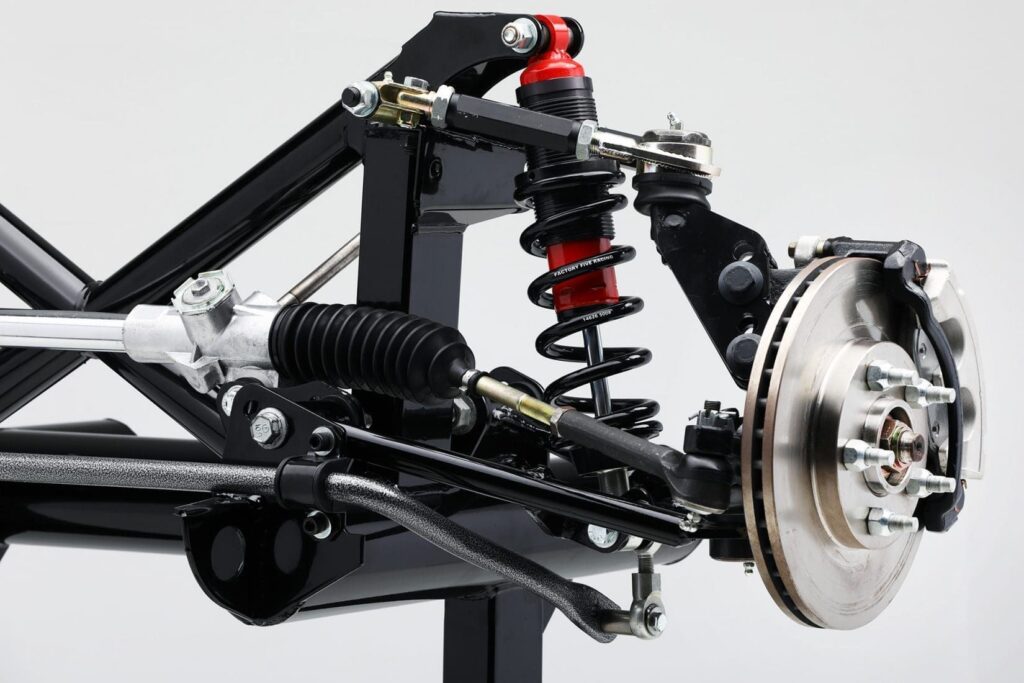
6. **Slammed or Jacked-Up Suspension**Modifying a vehicle’s ride height, whether through slamming it closer to the asphalt or lifting it dramatically higher, is a common pursuit among enthusiasts. The motivations range from purely aesthetic preferences to purported performance gains, and indeed, for dedicated track drivers or serious off-road adventurers, high-end coilovers or full suspension lift kits from reputable manufacturers do have their place. These specialized setups are meticulously engineered to enhance specific performance envelopes, but they represent a significant investment and are rarely suitable for the average daily driver.
However, the temptation to achieve a similar look or perceived benefit through cheaper, less rigorous methods is where the trouble begins. Reducing a car’s height by simply chopping a couple of inches off the factory springs, or installing inexpensive aftermarket lowering springs, is a bad idea. This approach fundamentally scrambles the intricate factory engineering that carefully pairs springs with dampers, leading to a cascade of unexpected issues. The result is almost invariably poor ride quality, premature wear on other critical components like tires, and a substantial hit to the vehicle’s resale value, as discerning buyers often perceive such modifications as liabilities.
Conversely, the trend of jacked-up suspensions for trucks and SUVs, while appealing for an aggressive stance, mirrors many of the same drawbacks when applied to vehicles primarily used for daily driving. While serious overlander owners might benefit from a comprehensive, high-quality lift, a casually lifted vehicle can degrade ride quality, create significant entry and exit problems for occupants, and introduce constant anxieties in everyday scenarios like parking garages. The costs can range from a substantial $1,000 to an astronomical $20,000 for full suspension replacements, making it a considerable waste of money for little practical benefit in city or highway use.
Ultimately, car manufacturers design suspension systems with a precise balance of comfort, handling, and durability in mind for a broad range of driving conditions. Deviating from this carefully optimized setup without professional-grade engineering and a clear, specific performance goal often leads to compromised safety, increased maintenance, and a less enjoyable driving experience. For the vast majority of drivers, investing in such dramatic and often poorly executed suspension alterations is a decision that will likely result in regret rather than genuine enhancement.
Read more about: What a Rip-Off: 15 Expensive Car Upgrades That Aren’t Worth It, According to Experts
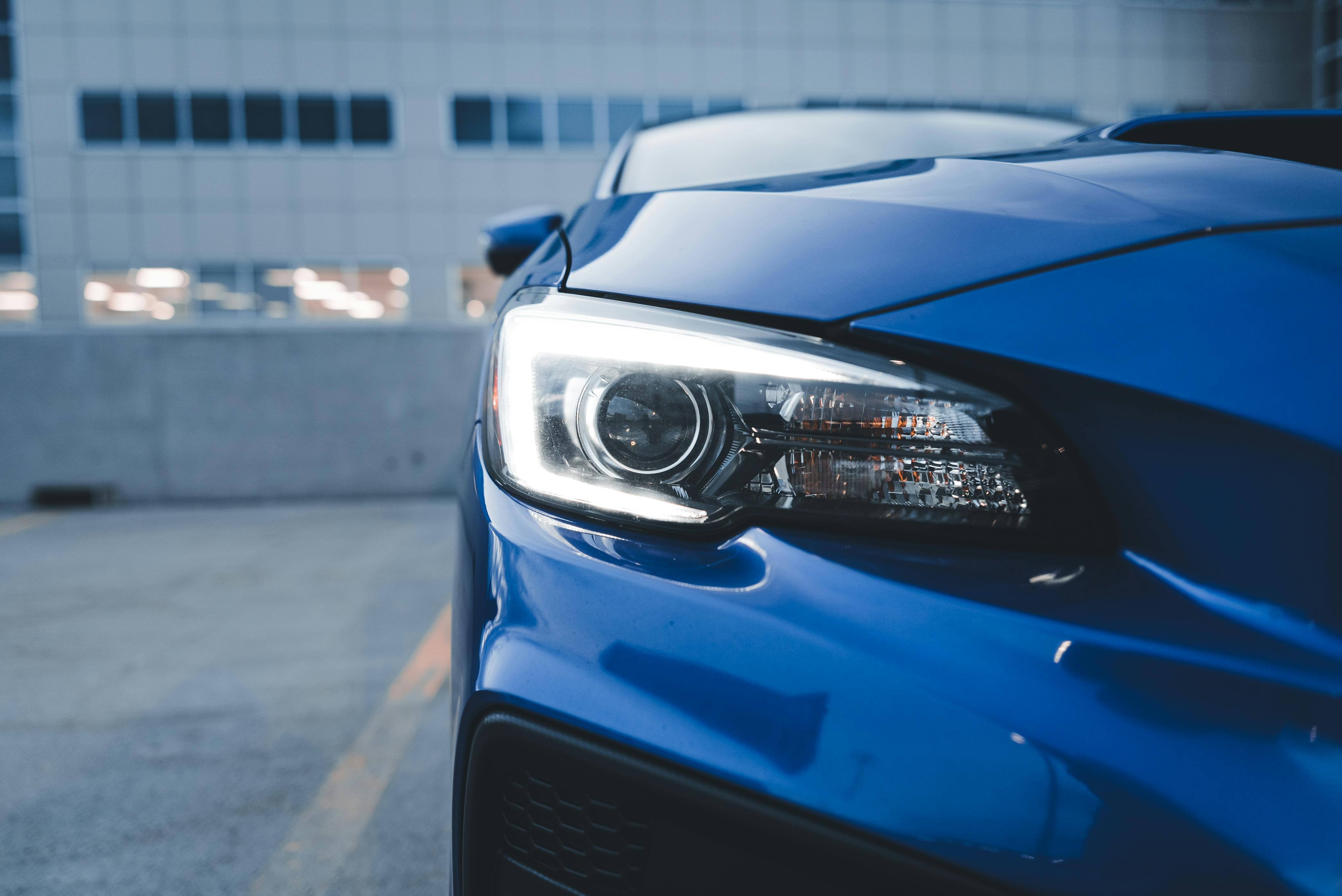
7. **Aftermarket LED Headlights**The shift towards LED lighting in modern vehicles is a positive development, offering improved visibility and energy efficiency. Factory-fitted LED headlights, integrated seamlessly into a car’s design, are indeed a good thing. They are engineered to cast light effectively and safely, without dazzling oncoming traffic. However, the allure of upgrading an older vehicle to LED technology through aftermarket bulbs, particularly when inserted into original equipment manufacturer (OEM) housings designed for conventional halogen bulbs, is where this modification takes a decidedly negative turn.
While aftermarket LED bulbs might appear to improve visibility for the driver, their fundamental incompatibility with housings designed for different beam patterns creates significant problems. Unlike halogen bulbs, which emit light from a central filament, LEDs emit light from multiple diodes. When placed into a reflector or projector housing not designed for this light source, the result is often a highly scattered and uncontrolled beam pattern. This typically translates to glare that blinds other drivers, a serious safety hazard that undermines the very purpose of effective headlights.
Furthermore, beyond the critical safety concern for others on the road, aftermarket LED conversions can ruin a car’s visual aesthetic. The inconsistent light output, mismatched color temperatures, and often visible individual LED points can give a vehicle a cheap, unrefined appearance, detracting from its overall design. Instead of achieving a modern, factory-integrated look, the outcome is frequently an awkward, aftermarket modification that compromises both functionality and style. It is a modification where the cons of inconvenience and danger far outweigh any perceived personal benefit.
Read more about: Luxury Car Owner’s Headlight Nightmare: Unmasking the Shocking Costs Behind Modern Automotive Lighting

8. **Fuel Line Magnets**The automotive aftermarket, unfortunately, has its share of “snake oil” products, and fuel line magnets stand out as a prime example of a complete scam. These devices are marketed with intriguing, yet entirely false, promises: that they can “prepare” a car’s fuel for more efficient burning, thereby reducing pollution and benefiting the environment. Such claims often prey on car owners’ desires for better fuel economy and reduced environmental impact, offering a seemingly simple, low-cost solution to complex engineering challenges.
However, despite the glossy marketing, the scientific and engineering consensus is unequivocal: fuel line magnets do absolutely nothing to purify gasoline or reduce a car’s emissions. The underlying pseudo-science often involves magnetic fields somehow aligning fuel molecules, but this concept has no basis in physics or chemistry relevant to internal combustion engines. Countless independent tests and automotive experts have consistently debunked these claims, proving that these magnets have no measurable effect on fuel efficiency, horsepower, or exhaust emissions. They are, in essence, entirely inert and functionally worthless.
For car enthusiasts genuinely concerned about a vehicle’s emissions or potential debris in the gasoline, there are legitimate and effective alternatives. These include considering a switch to an electric vehicle, if feasible, or ensuring regular maintenance, such as getting a new fuel filter when necessary. These are proven methods that address real automotive concerns with tangible results. Wasting money on fuel line magnets, which for all their claims are simply magnets attached to a fuel line, is a classic example of an aftermarket purchase that offers zero benefit and only drains your wallet. Save your cash for a more impactful and real upgrade, or perhaps, as we often suggest, “Go buy a latte instead.”
Read more about: The Great American Road Trip Renaissance: Why Highways Are Conquering the Skies in 2025
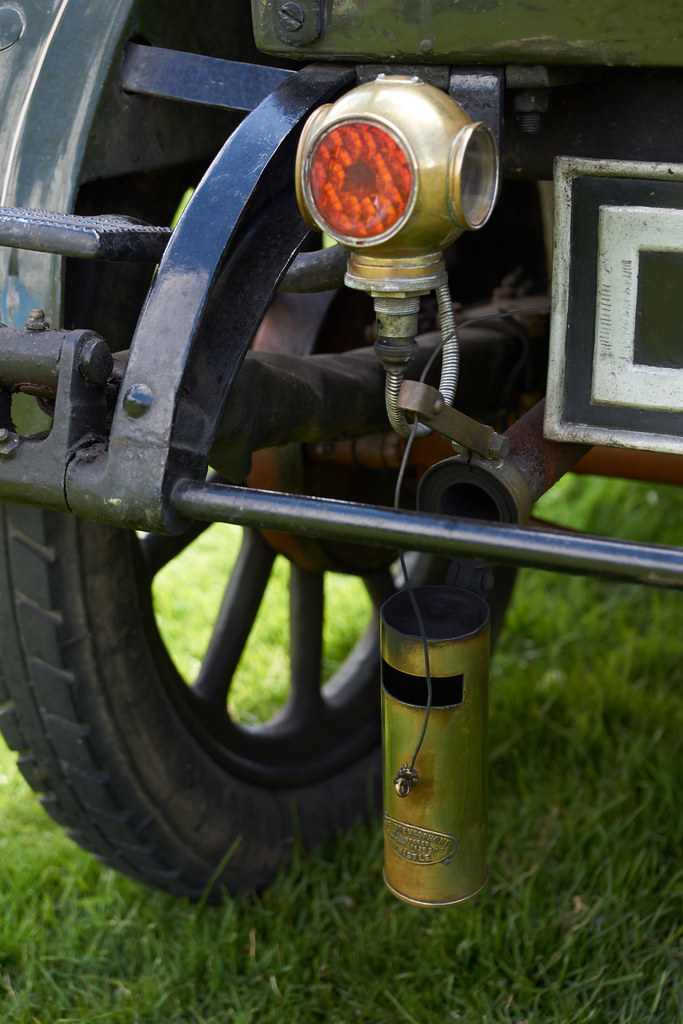
9. **Exhaust Whistle Tips**Among the array of aftermarket modifications designed for auditory rather than practical impact, exhaust whistle tips carve out a niche for themselves as particularly ill-advised. These are generally inexpensive and flashy additions intended to make a car louder and more aggressive, specifically by creating a distinctive high-pitched whistling sound within the exhaust pipe. For some, the novelty or the desire to stand out might seem appealing, but the reality of owning and operating a vehicle with whistle tips quickly proves to be anything but positive.
Critically, exhaust whistle tips serve absolutely no functional purpose whatsoever. They do not enhance performance, improve fuel efficiency, or contribute to the longevity or health of the vehicle’s exhaust system. Their sole design intention is to generate noise, and in doing so, they often create a sound that is widely considered to be irritating and obnoxious. This modification is a textbook case of form without any practical function, prioritizing a fleeting auditory novelty over any genuine automotive benefit or enhancement.
The negative repercussions extend beyond mere annoyance. Equipping your vehicle with exhaust whistle tips is a surefire way to draw negative attention, primarily from your neighbors who will quickly tire of the incessant whistling, and perhaps more significantly, from law enforcement. Many jurisdictions have strict noise ordinances and vehicle modification laws designed to prevent excessive or unusual exhaust sounds. Drivers with whistle tips can easily find themselves facing fines or other legal repercussions, transforming a seemingly innocuous modification into a costly and inconvenient liability. In short, this is one modification that will achieve little more than annoying everyone around you and potentially getting you into trouble.
Read more about: Beyond the Hype: Decoding the True Impact of Every Gaming PC Component Pros Rely On

10. **Spinner Hubcaps**Spinner hubcaps, which rotate independently from the wheel after the vehicle stops, were a brief but impactful trend in automotive customization, particularly popular in the 1990s and early 2000s. They created a unique optical illusion, making the wheels appear to continue spinning even when the car was stationary, an effect that many car enthusiasts at the time found visually pleasing and attention-grabbing. For a period, they symbolized a certain flair and individuality on the road, turning heads wherever they went.
However, like many fleeting fashion trends, spinner hubcaps quickly faded from widespread appeal. Today, they are largely considered an outdated and often obnoxious modification. What once appeared cutting-edge now often looks garish and distracting, cheapening a vehicle’s appearance rather than enhancing it. The novelty has long worn off, and the aesthetic has not stood the test of time, relegating them to a category of modifications that are more likely to elicit eye-rolls than admiration from contemporary observers. They serve no performance benefit and certainly do not contribute to a vehicle’s sophistication or value.
Perhaps the most significant downside to spinner hubcaps, beyond their outdated aesthetic, is their legal status. In a crucial development that many car owners might not even be aware of, spinner hubcaps are now illegal to sell in the United States. Many states began cracking down on them in the mid-2000s, citing safety concerns related to their potential to interfere with other drivers’ perception of vehicle movement and their general distraction. While a driver might not necessarily be arrested for simply having them on their vehicle if they were installed before the bans, they could certainly face a hefty fine. This makes them a modification that not only looks dated but also carries a tangible legal risk, making them an unequivocally bad investment for any car owner.
Navigating the world of aftermarket modifications requires a discerning eye and a commitment to genuine automotive enhancement over fleeting trends or false promises. As we have meticulously detailed, numerous modifications exist that promise to elevate your ride but ultimately diminish its value, compromise its safety, and introduce unforeseen headaches. From the purely superficial to the dangerously impractical, these upgrades serve as a stark reminder that not all customization is created equal. Prioritizing quality, compatibility, and legitimate functional improvements will always yield a more rewarding and reliable ownership experience. Always remember, the true enhancement of a vehicle lies in choices that support its inherent engineering, ensuring safety, durability, and a driving experience that genuinely stands the test of time, rather than falling prey to expensive illusions.

